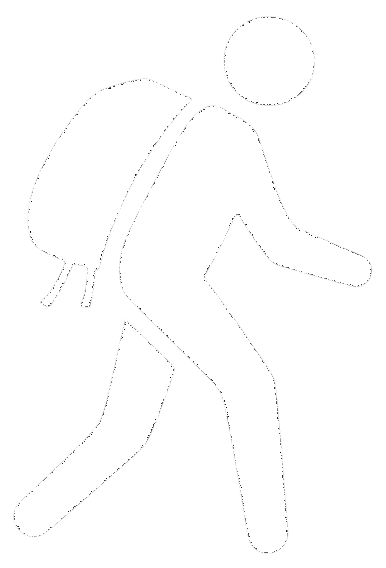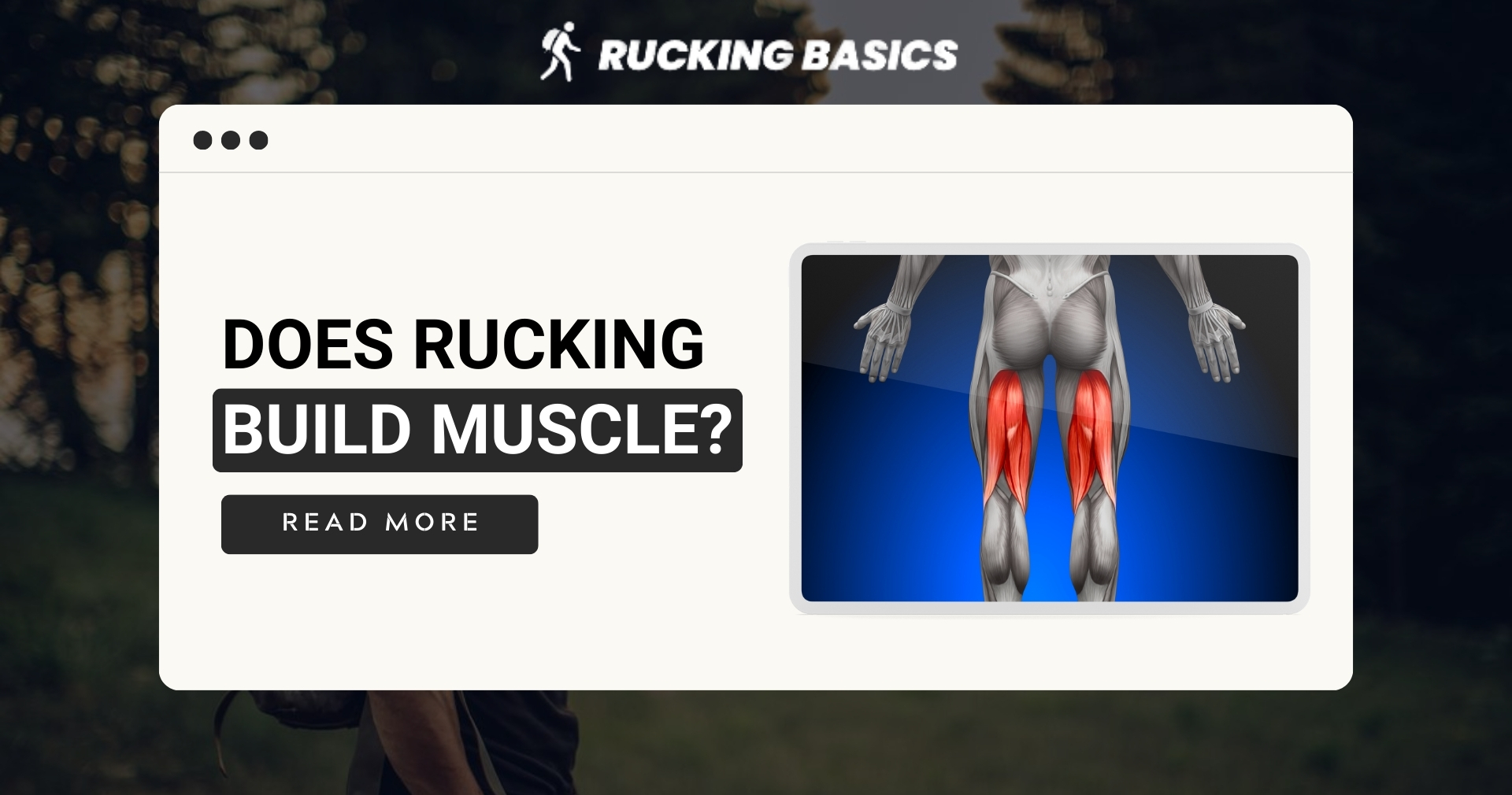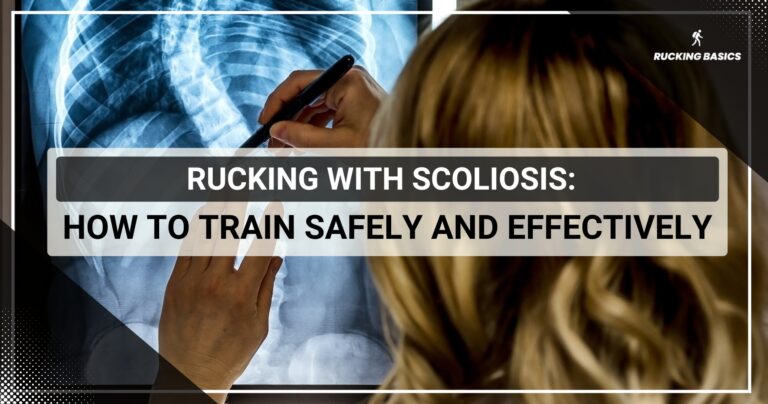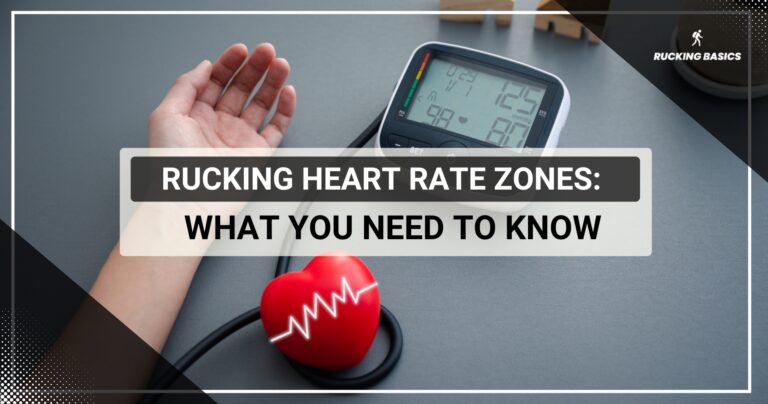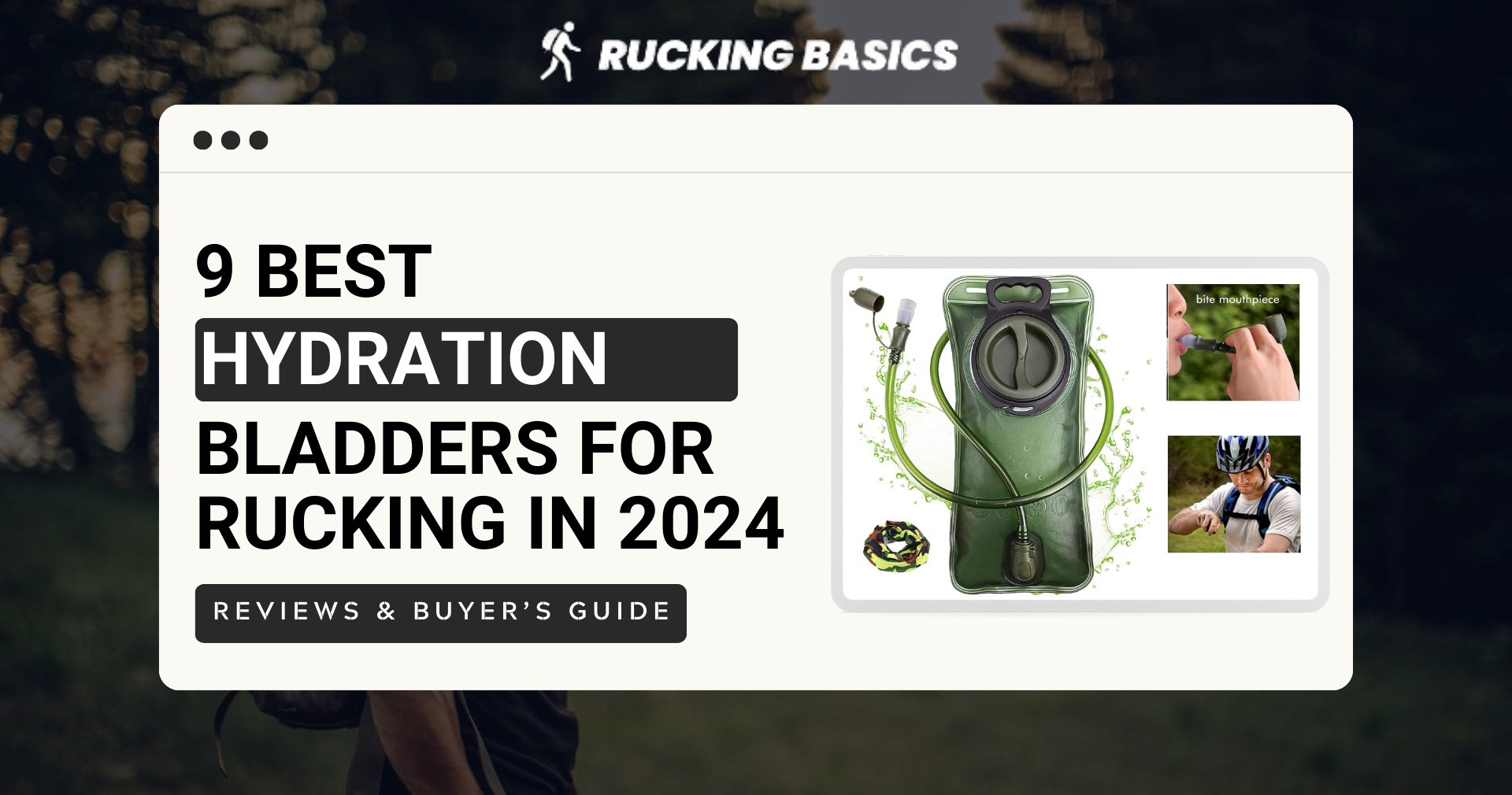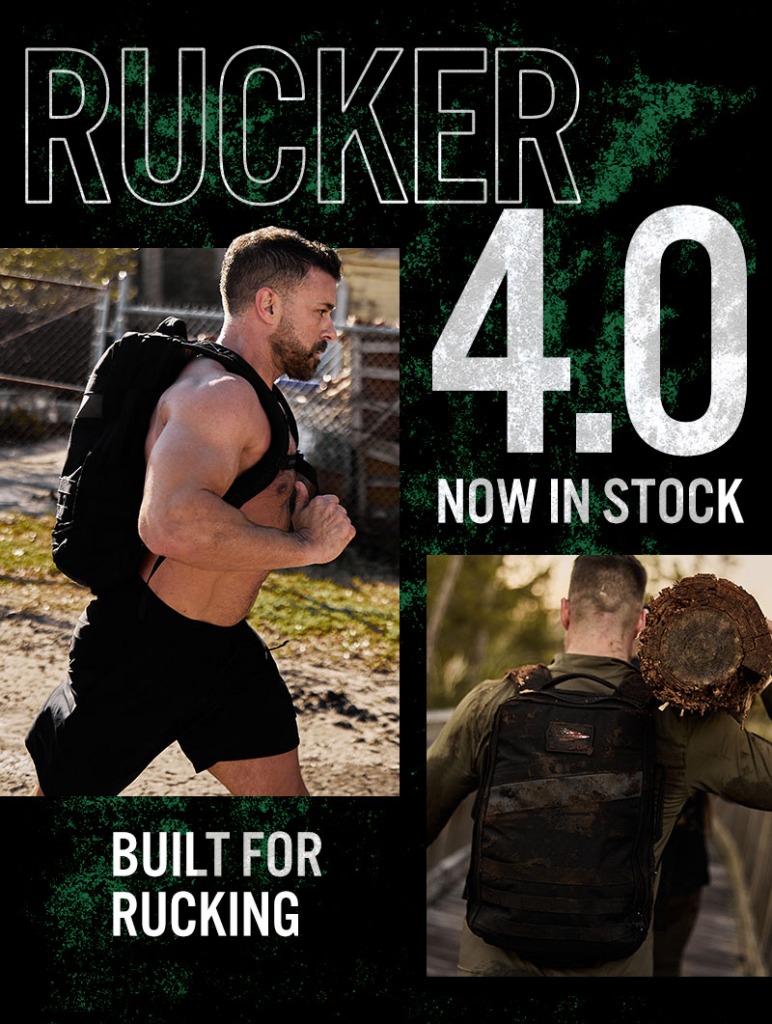At first glance, rucking might seem like just another endurance exercise, but when you add a weighted backpack, you engage your muscles in ways traditional cardio cannot. Each step you take with that extra weight tests your body, improving both stamina and muscle strength.
So, the short answer is yes—rucking does build muscle. Having incorporated rucking into my fitness routine, I can personally attest to its muscle-strengthening benefits.
Rucking gave me a full-body challenge that simultaneously targets various muscle groups. Every muscle plays a role, from the legs and core to the upper body. Over time, I’ve noticed increased strength and muscle definition, particularly in my legs and back.
Let’s dive in and discover the full potential of rucking for building muscle!
Does Rucking Build Muscle?
Rucking is often seen as an aerobic exercise, but it offers much more than that.
It can absolutely build muscle, and from personal experience, I can say it’s more effective than many people give it credit for. When you head out for a ruck, you use various muscle groups. This turns what might seem like a simple walk into a strength workout. The weight forces your muscles to work harder, helping to build muscles in the long run.
When I first got into rucking, I didn’t expect the kind of physical changes I’d see. Whether you’re new to rucking or have been doing it for years, it’s one of those exercises that quietly delivers significant results in muscle development consistently.
The Science of Muscle Growth: Understanding Hypertrophy
Before explaining how to boost muscle gain with rucking, I think it’s important to understand the fundamentals of muscle growth, a process known as hypertrophy.
In simple terms, hypertrophy occurs when your muscle mass grows larger due to resistance training. Every time you challenge a muscle with a load—lifting weights, doing bodyweight exercises, or rucking—you create tiny microtears in the muscle fibers. Your body responds by rebuilding the muscle fibers to be stronger and thicker. This cycle of breakdown and repair is the essence of muscle growth.
You cannot achieve that without resistance. You need to place enough stress on the muscle to break down and signal the need for repair. You might think that a rucking workout doesn’t offer the heavy resistance that comes with lifting weights, and that’s true. Still, it delivers enough load to kickstart this muscle-repair process.
How Does Rucking Affect Different Muscle Groups?
Beginner ruckers usually expect that rucking engages only the lower body, but trust me, you’ll feel it everywhere, not just in your legs. Almost every muscle group can be involved.
Leg Muscles
Your legs are doing most of the heavy lifting during a ruck. The quads, hamstrings, glutes, and calves are constantly active. Every step forces your leg muscles to stabilize and push you forward. Walking uphill, across rocky trails, or on uneven ground intensifies the workload on your legs. After a tough ruck on hilly terrain, my legs are burning—a clear sign that they’ve been pushed beyond what a regular walk would do.
Core Muscles
Stabilizing a heavy backpack or weighted vest while keeping your body straight requires significant engagement from your abdominal muscles and lower back. You may not always notice your core working during the ruck, but you’ll certainly feel it when you adjust your pack or quickly shift your stance. I’ve often noticed how much my abs tighten on more demanding trails due to the constant need to stabilize my body and rucksack.
If you’re serious about building strength in your midsection through rucking, exploring rucking abs strategies can help. This rucking abs guide highlights how to maximize core engagement and improve your posture while rucking.
Upper Body
Carrying a weighted pack activates muscles in your shoulders, traps, and upper back. The weight distribution requires your upper body to maintain proper posture, which prevents slouching and injuries. My traps and shoulders are often sore after long rucks, particularly with heavier loads.
How to Maximize Muscle Building During Rucking?
My advice is to follow these few key strategies that can help you get the most out of each session.
Progressive Overload
One of the most essential principles of muscle growth is progressive overload—gradually increasing the weight in your ruck, increasing your rucking speed, and/or the distance you cover over time.
Each time you head out, try adding a little more weight to your pack or pushing yourself to ruck farther. This is how you make real gains, be it in the gym, street workout, or rucking workout. It hits multiple muscle groups and offers a balanced mix of strength and endurance.
And let’s be real—it’s way more exciting than treadmill runs! You don’t have to jump from 20 to 50 pounds overnight; just slowly increase the load, and your muscles will keep growing.
Rucking Uphill
If you’re looking to push your lower body more, taking on inclines is a thing to do. Even short uphill stretches can make a big impact on your muscles. So, if you’ve got access to hills, inclined trails, or even a high-quality treadmill, make them a regular part of your routine.
Proper Form and Posture
Good posture is crucial during rucking, not just for preventing injury but also for ensuring you engage the right muscles.
When your posture is off, you might be putting strain on the wrong areas, which can lead to discomfort and asymmetries. Make sure your back is straight, your core is engaged, and your head is up while rucking. This simple adjustment can make your ruck more challenging in a good way, working more muscles and helping you avoid strain.
Short Sprints or Intervals
If you’re up for the real challenge, mixing in short sprints or fast-paced intervals during your ruck can seriously ramp up the intensity.
These intervals will improve your cardiovascular endurance, similar to HIIT workouts, but will also recruit more muscle fibers for strength and power. Even if you just sprint for 10-20 seconds here and there, it makes a noticeable difference in how your muscles respond. However, be careful and don’t try this too soon.
The Role of Nutrition in Building Muscle Through Rucking
I’m always telling my clients you can’t out-train (or out-ruck in this case) a bad diet if you’re looking to gain muscle, so you need to focus on:
- Protein Intake: Protein is essential for muscle repair and growth. I aim to get a solid amount of protein in each meal, whether lean meat, eggs, or plant-based options.
- Caloric Surplus: Proteins are not enough; you also need to be in a caloric surplus—which means consuming more calories than you’re burning. Rucking burns a significant amount of calories, so eat enough fats and carbs, too.
- Hydration: Don’t forget about hydration! Staying hydrated helps keep your muscles functioning optimally.
Common Mistakes That Hinder Muscle Gains During Rucking
As with any workout, there are mistakes that will undoubtedly hinder your muscle-building progress. Here are a few common ones I see:
- Using Too Light Load: If you’re not using enough weight, your muscles aren’t being stimulated. Start with a reasonable load, but later increase it. If you do not change the load for months or years, you will continue to reap some other benefits of rucking, but muscle building will not be one of them. If you’re new to this, learning how to start rucking properly is important. It helps you find the right weight to begin with, so you don’t end up overloading yourself and missing out on muscle growth.
- Inconsistent Schedule: Muscle growth requires consistency. Rucking once a week won’t yield the same results as a regular routine. I like to aim for at least two or three rucking sessions a week.
- Ignoring Recovery: Rest is when muscles repair and grow, so it is equally important as a workout. You need to have enough recovery time between sessions. Overtraining can actually backfire and prevent your muscles from rebuilding properly.
Is Rucking Ever Bad for You?
It’s important to listen to your body. While rucking is generally safe, there are times it could strain your joints or back if done improperly.
If you’re carrying too much weight or using bad form, you could risk injury.
Learn more about whether rucking can be bad for your health here: is rucking bad for you?.
Always start with a manageable load and increase gradually. Proper form is key to preventing problems down the line.
Wrapping Up
To wrap things up, rucking is an excellent, low-impact way to build muscle. While rucking may not fully replace the need for heavy weightlifting, it complements strength training.
The consistent practice of rucking has helped me improve, especially in areas often overlooked in standard workouts. It’s a great way to add variety to your fitness regimen plus spend more time in nature.
With dedication and the right approach, you’ll be amazed at how much strength and muscle you can develop while hitting the trails with a weighted pack. Happy rucking!
Frequently Asked Questions (FAQs)
Can rucking replace traditional weightlifting for muscle building?
Rucking can’t fully replace weightlifting. Rucking strengthens your legs, core, and back through, but it lacks the heavy resistance that weightlifting provides for significant hypertrophy. Ideally, combine both for balanced muscle development.
Is rucking a good way to build leg muscles compared to running?
Rucking can build leg muscles more effectively than running because of the added resistance from the weighted backpack. The extra load engages your quads, hamstrings, glutes, and calves more intensely than running alone.
Does rucking build explosive strength or just endurance strength?
Rucking primarily builds endurance strength, as it’s a sustained physical activity over time. However, incorporating sprints or hill rucking can add an element of explosive strength training.
How does rucking compare to hiking for muscle development?
Because of the added weight in the ruck, rucking is more focused on muscle development than body weight hiking. Hiking builds muscular endurance, but rucking provides the extra resistance needed to stimulate muscle growth.
Does rucking barefoot or with minimalist shoes increase muscle activation?
Rucking barefoot or with minimalist shoes can increase muscle activation, especially in your feet, ankles, and calves. Nevertheless, it also increases the risk of injury.
References
Earl-Boehm JE, Poel DN, Zalewski K, Ebersole KT. The effects of military style ruck marching on lower extremity loading and muscular, physiological and perceived exertion in ROTC cadets. Ergonomics. 2020 May;63(5):629-638. doi: 10.1080/00140139.2020.1745900. Epub 2020 Apr 2. PMID: 32191155.
Faghy MA, Shei RJ, Armstrong NCD, White M, Lomax M. Physiological impact of load carriage exercise: Current understanding and future research directions. Physiol Rep. 2022 Nov;10(21):e15502. doi: 10.14814/phy2.15502. PMID: 36324291; PMCID: PMC9630762.
Faghy MA, Brown PI. Training the inspiratory muscles improves running performance when carrying a 25 kg thoracic load in a backpack. Eur J Sport Sci. 2016 Aug;16(5):585-94. doi: 10.1080/17461391.2015.1071878. Epub 2015 Aug 14. PMID: 26274785.
